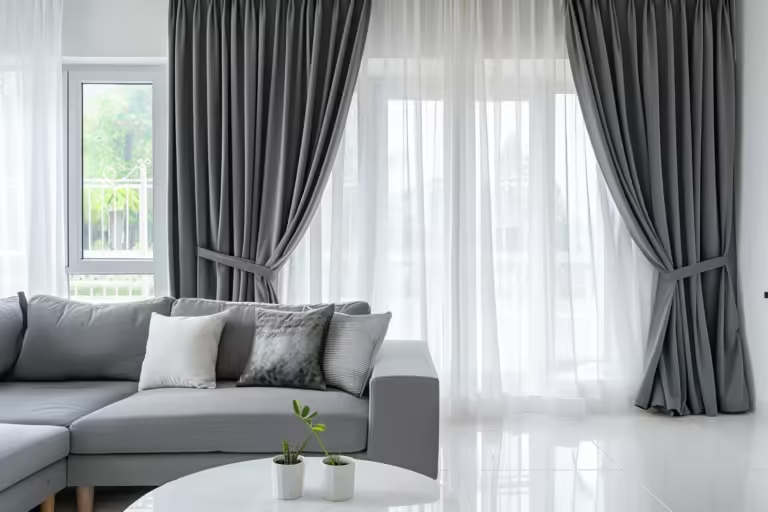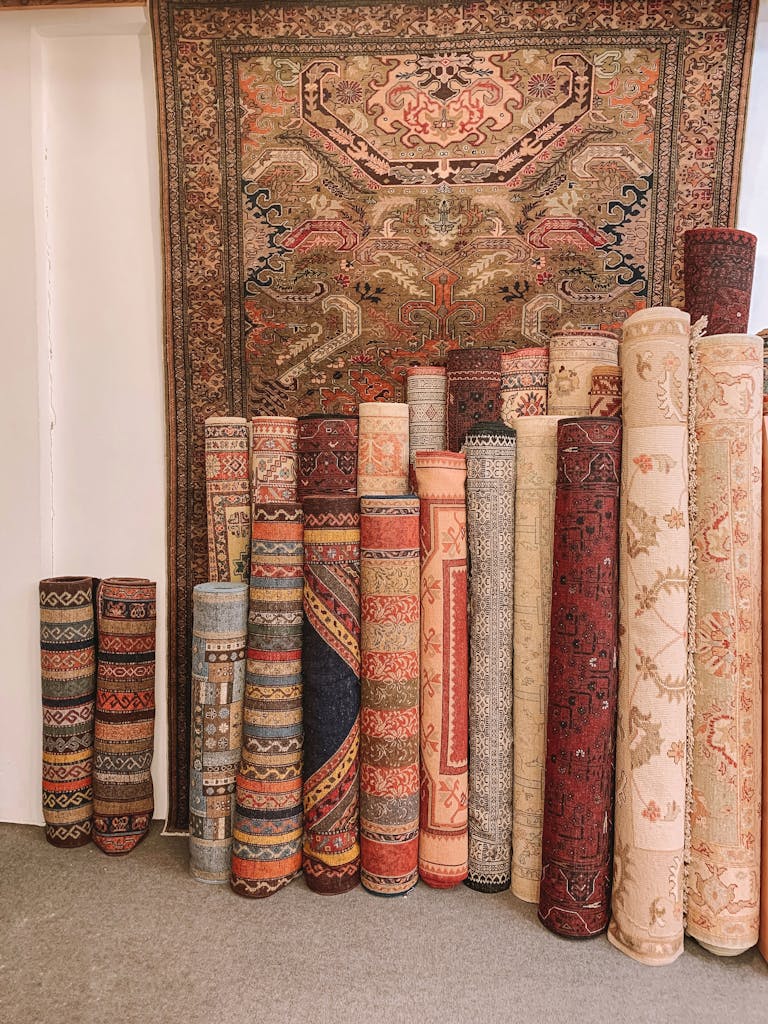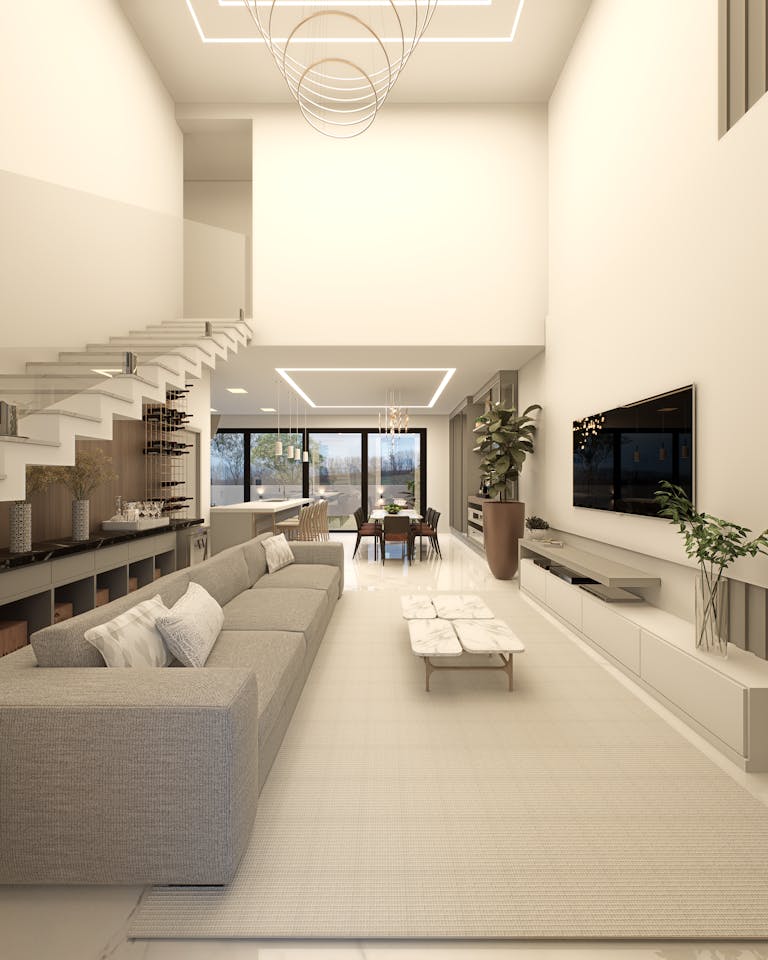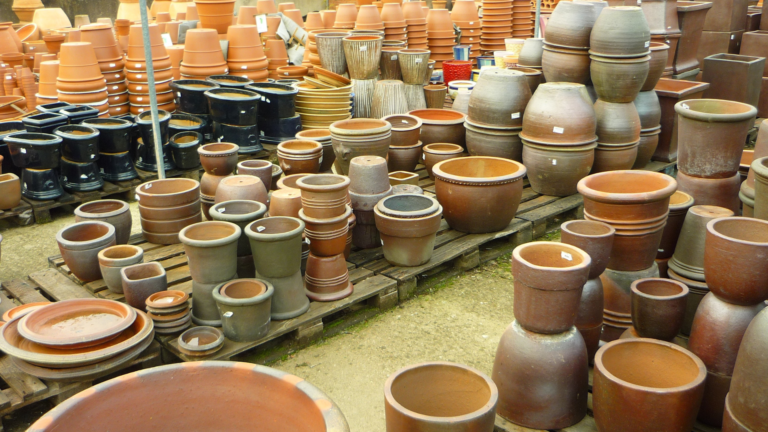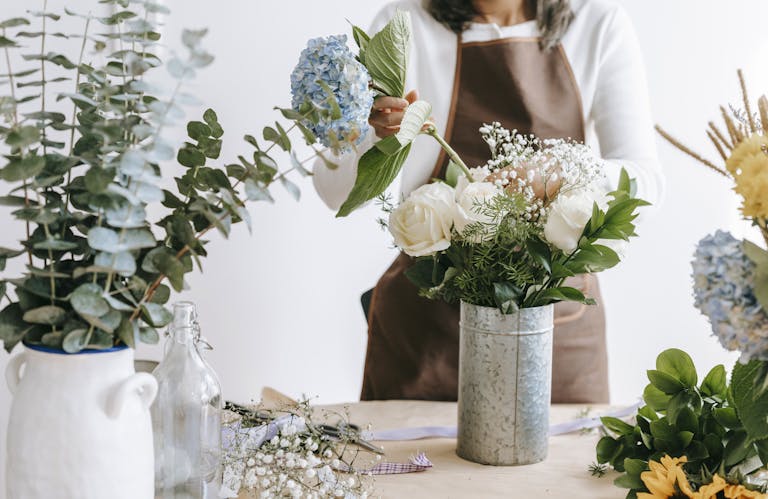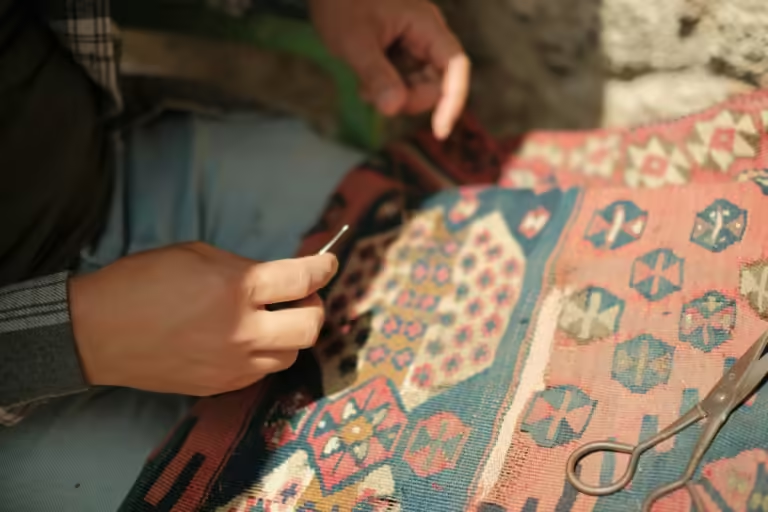Toddler to Teen 37 Smart Kids Room Design Ideas
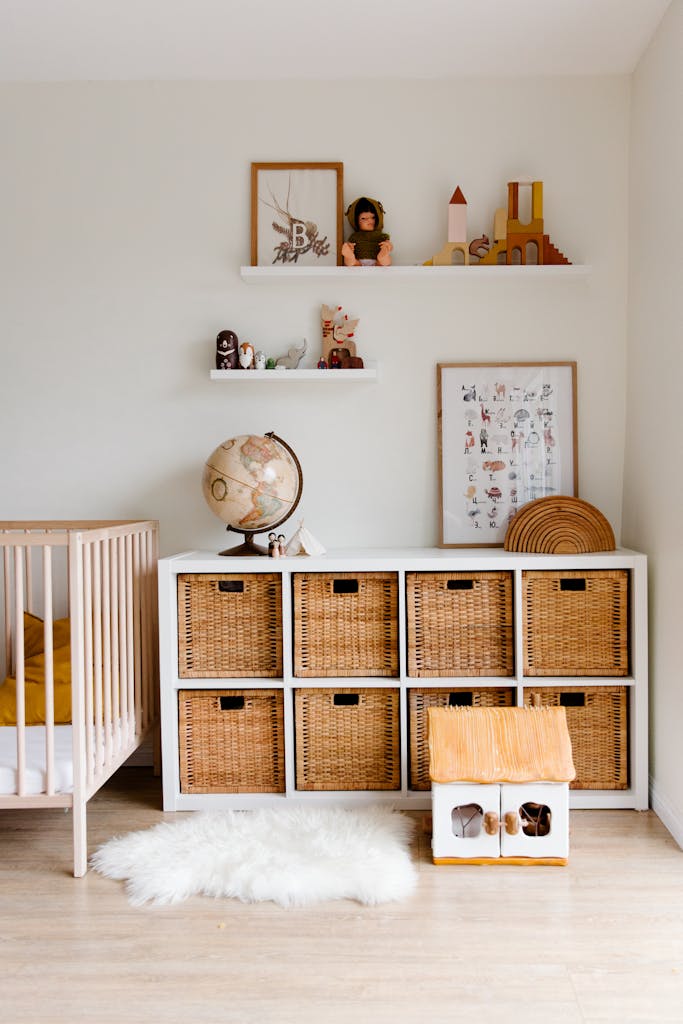
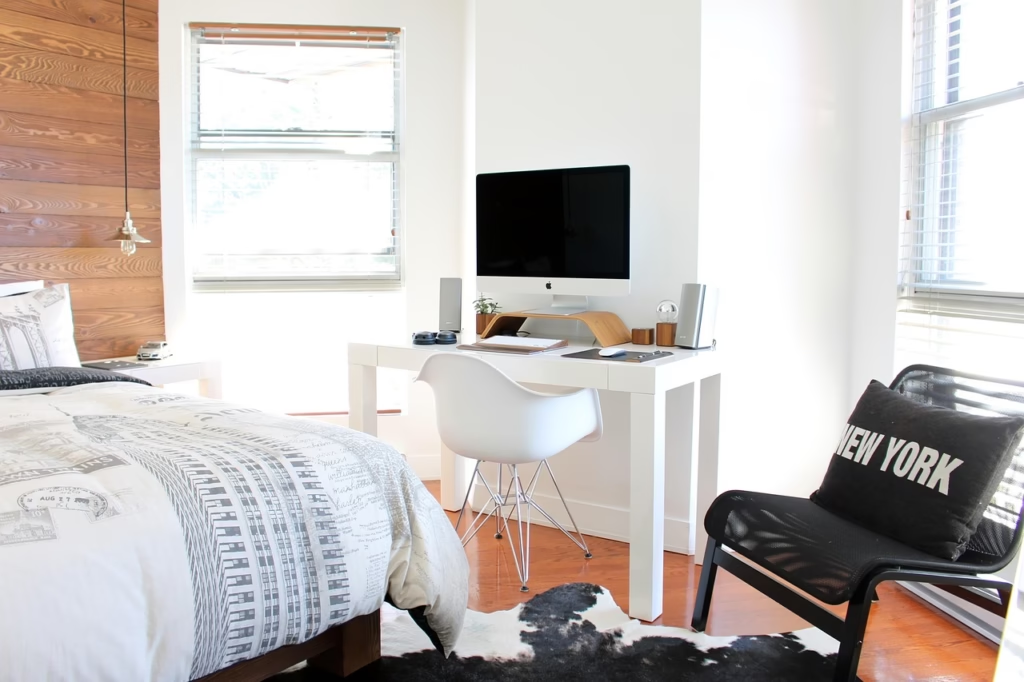
Toddler to Teen 37 Smart Kids Room Design Ideas that grow with your child: smart, stylish, practical, and science-backed solutions for every stage. Ideal for parents looking for timeless kids’ room design ideas that not only work but are, in fact, beneficial for their child’s development.
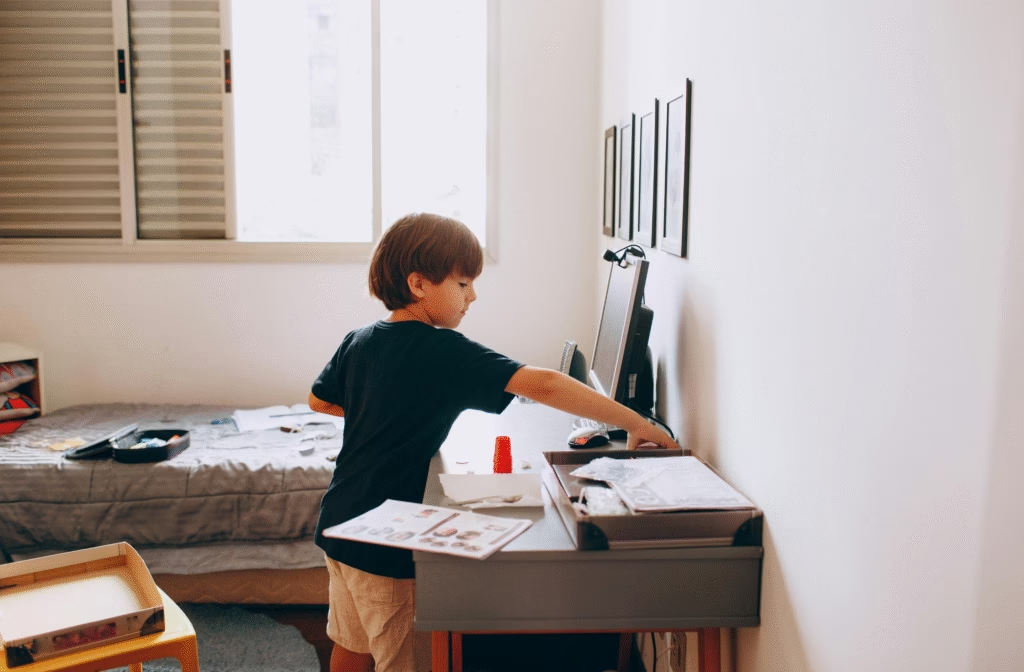
Planning and designing a kid’s room that actually works for your child from toddlerhood to the teen years isn’t just about “Pinterest-worthy” looks. It’s about using your space smartly, thinking ahead, and understanding how your child’s emotional, physical, and cognitive needs evolve as they grow.
In this guide, we’re going to be discussing 37 smart kids’ room design ideas that are structured by age group, and backed by child development psychology, interior design principles, and real-world practicality.
Plus, we’ll also try and keep it all in a budget.
Let’s decode what works and why.
Related Reads:
- Which is the Best Mattress for Your Bedroom? 2025
- Which Bed is Best for Your Bedroom? Complete Guide
- False Ceiling Designs For Bedroom
- 37 Small Space Saving Tips You Should Know
- Finding The Best Curtain Type for Your Living Room
- Best Buying Guide on Big Carpets
- 10 Hard To Kill Indoor Plants For Busy People
The Smart Kid’s Room Design Hypothesis
If a child’s room is designed with flexible foundations and age-aware zones, it reduces clutter, supports autonomy, and creates a space that adapts with ease to your child’s personality and development, at the same time, saving your money, time, and future frustrations.
This whole approach is built on 3 real things, not just aesthetic trends:
- Growth stage psychology of children – motor skills, independence, privacy, and regulation need shift fast.
- Environmental stimuli (motivation) control – Too much light, color, or clutter causes mental overload.
- Design flexibility – a child’s taste changes often; the room should allow those changes without expensive overhauls.
Let me explain these three points further for better understanding:
- Growth stage psychology of children (kids grow fast and their needs grow faster).
From crawling to climbing to studying to turning knobs and slamming the door shut at 13 – every stage of childhood comes with new physical and emotional needs.
What works for a toddler doesn’t work for a 10-year-old. Their motor skills, independence, sense of privacy, and emotional regulation all develop stage by stage.
So, instead of redesigning everything every few years, you set up the room with certain design elements or zones that adapt as they grow, like a flexible study corner, evolving storage, and furniture that’s not locked to one age (like a small single bed instead of a full single bed).
So, you’re room design has to be ready for those shifts with growth.
- Environmental stimuli control (Too much stimulation = burnout for both you and the child).
Children are highly sensitive to their environment. Loud colors, flashy prints, too many toys, and chaotic layouts can actually overwhelm them.
Kids are more sensitive to their environment than adults. The right room design knows when to energize and when to maintain calm. It helps them regulate emotions, focus better, and feel safe.
A calmer, more organized room supports focus, sleep and behavior, and thus leads to fewer tantrums about mess.
- Design flexibility (Kids change their minds a lot. Your walls, fabrics, and furniture shouldn’t suffer constantly).
Today it’s animals, tomorrow it’s superheroes, then dinosaurs, and next it might be outer space, or skateboards, or a fantasy world. The list can go on, and so the goal isn’t to redesign every six months. It’s to build a base that lets you swap out decor, bedding, and lighting without tearing the room apart.
That’s real flexibility.
Tip: If you want to keep a measurement of their height, don’t damage the walls with cuts or marks; instead, get height measuring decals. They’re accurate, come in various designs, and you can remove/swap them whenever you want.
So remember that the child who loves panda bears today may want minimalist greys tomorrow. Thus, make sure your kids’ room design ideas are centered around flexibility. Use neutral walls, removable decor, and adaptable furniture.
This lets you update things with minimal cost and effort instead of gutting the entire room every time they change their mind and are adamant about it.
This is the design mindset behind everything in this guide.
Related Reads:
- Which is the Best Mattress for Your Bedroom? 2025
- Which Bed is Best for Your Bedroom? Complete Guide
- False Ceiling Designs For Bedroom
- 37 Small Space Saving Tips You Should Know
- Finding The Best Curtain Type for Your Living Room
- Best Buying Guide on Big Carpets
- 10 Hard To Kill Indoor Plants For Busy People
General Rules Before You Start
These are some general yet smart fundamental principles that you must keep in mind while planning your kids’ room design ideas:
- Base Palette: Choose a neutral base palette for walls, flooring, and big furniture
- Storage: Invest in quality storage over themed decor
- Functionality: Prioritize function first, then layer in personality
- Zones: Create defined zones – like a sleep zone, study zone, play and storage zones.
- Lighting: Ensure lighting has layers – task, ambient, and overhead lights
Toddler to Teen 37 Smart Kids Room Design Ideas
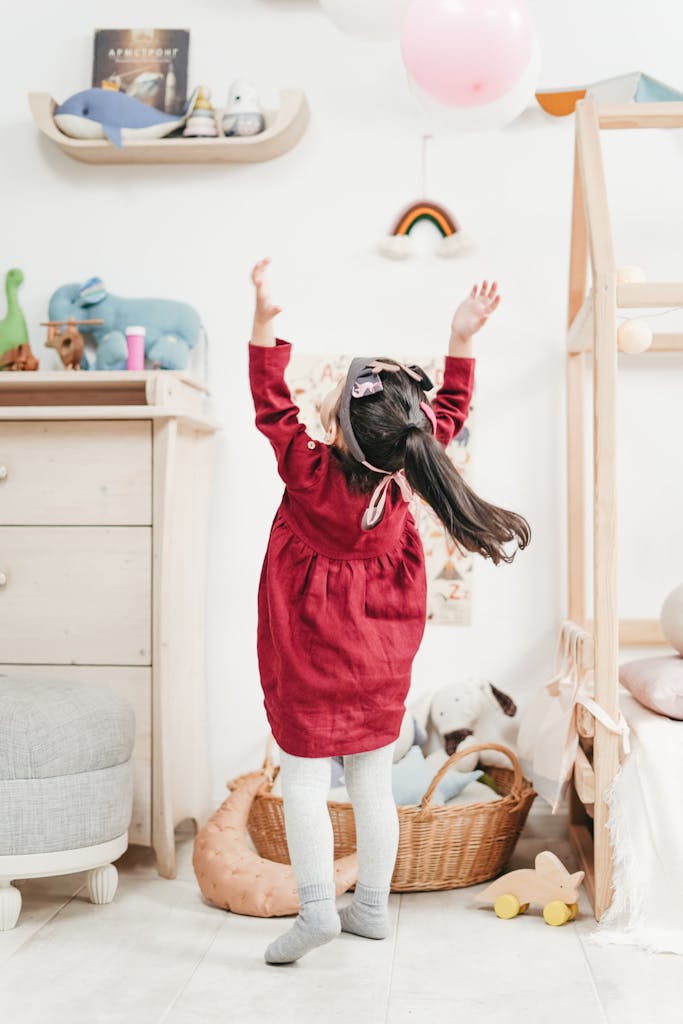
Ages 2 – 5: Safety and Discovery
At this stage, kids are just discovering the world around them. Their room should feel calm, safe, and easy to move around in. And while some suggest that everything should be within your toddler’s reach, I think otherwise.
Kids’ room design ideas at this stage should create a balance between your toddler’s exploration, while at the same time supporting your sanity.
Certain things like clothes, books, puzzles, or even remote controls can quickly turn into daily messes.
Design Tips and Ideas:
1. Low bed with guard rails or easy-to-clean comfy floor mattress. This encourages independence from a young age and prevents falls. Put guardrails by the stairs if you have stairs at home.
2. Soft-close toy chests or labeled pull-out bins to prevent finger injuries and keep clutter hidden.
3. Rounded-edge furniture (Like poufs or ottomans for safer play) and anchored shelves.
4. A washable foam play mat to define floor zones, like a play area or a study area.
5. Use washable paint and soft wall colors (not a bright color blast). Use colors like peach, sage, cream, or baby blue or pink (that’s your choice), but make sure you choose paint to handle the inevitable crayon wall art.
6. Don’t use harsh lighting; instead, use calm ceiling lights or lamps, and try to include a night lamp.
7. Use blackout curtains to aid naps.
8. For wall decor or art decor, use decals or framed art that can be changed whenever you want. Framing and hanging your child’s art on the walls will encourage more creativity.
Ages 6 – 9: Imagination, Routine Buildup & Accessible Exploration
This is when learning, playing, and forming habits come together. Children this age are curious about everything, but they’re also getting used to the school routine and any extracurricular activities they enroll in.
Design Tips and Ideas:
9. An ergonomic desk (a low study table) with an adjustable chair will make homework and drawing accessible.
10. Get a full-size single bed with under-bed storage at this stage, keeping the future use in mind. You can add guardrails for safety, and remove them later on; also, invest in mattress protectors for ease of mattress maintenance.
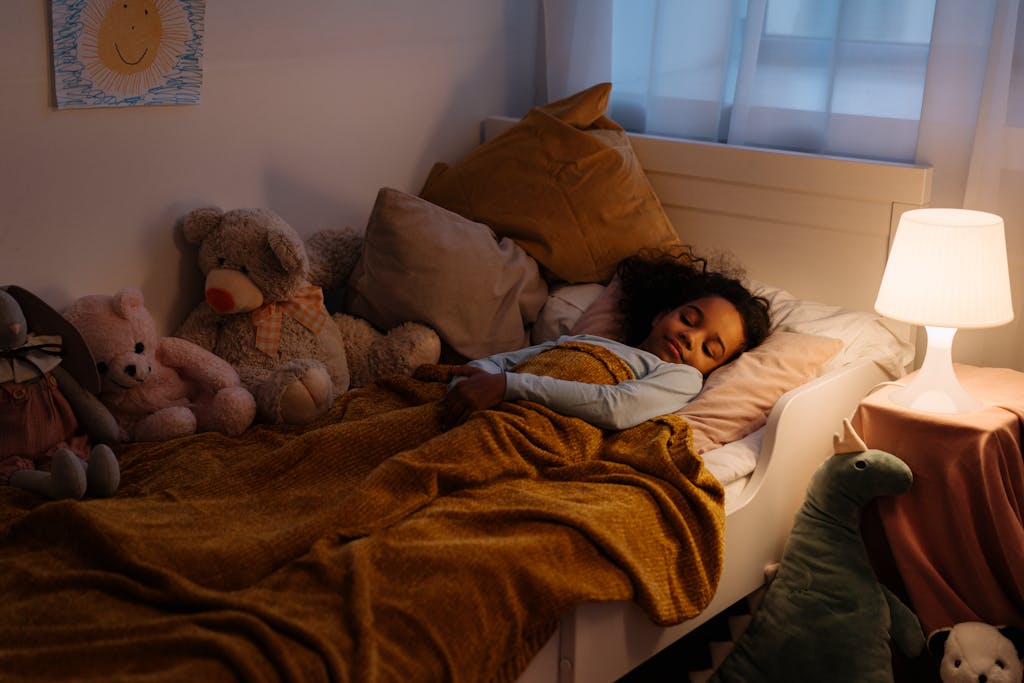
11. One wall with framed art or rotating display. It’ll be like a gallery wall of your child’s creativity. You can also use a clip string for displaying art instead of frames or boards for style and budget.
12. Create a reading nook with a Montessori-style shelf system. Design it however you like. Use a cushion or bean mat on the floor, or a reading chair, a couch, or a sitting area by the window (bar the windows for safety).
13. Closed cabinet with pull-out shelves for ease of access. Don’t leave the cabinets open for access at any time to avoid a mess. You can use storage trunk benches for an extra sitting area.
14. Pegboard or hooks at kid-height for coats and bags.
15. Warm light desk lamp for homework and stationery organizers.
16. Do color blocks or paint half-wall to divide zones; it’ll work as an accent wall as well. This way, your accent walls get a purpose besides being a simple aesthetic.
17. Magnetic whiteboards for putting up crafts, or build a DIY board with your child, like having a hanging organizer with pocket storage made from old fabrics.
18. If you have children sharing the same room, besides a bunk bed or twin sets of beds, try to get a longer desk for 2 people or a cubicle-like system to let each have their own private space. Also, label each kid’s storage and shelf to avoid arguments.
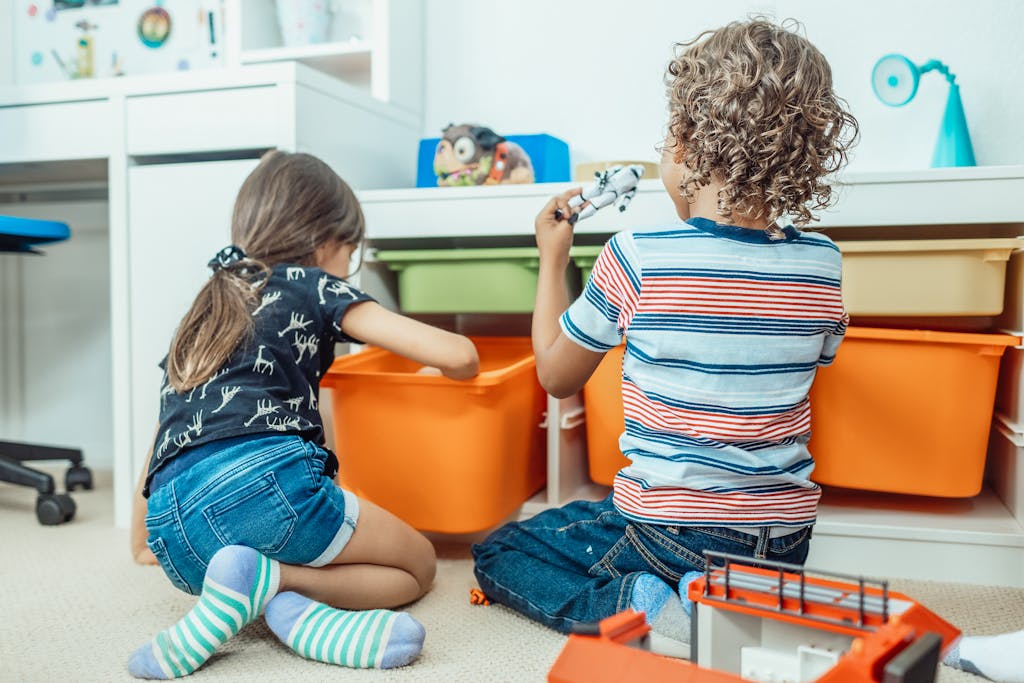
Ages 10 – 12: Organization, Study Flow, & Initiation of Identity Search
Preteens need a room that respects their growing independence. This is the time to introduce better storage, a more serious study area, and flexible decor that lets them explore their identity.
Design Tips and Ideas:
19. Study station with cable-managed desk for using a PC, Tablet, or Laptop. Add a supportive chair with a footrest (if needed). Keep the device’s password protected at this stage to avoid wasting time.
20. At this stage, you can introduce pin boards, if you don’t want a magnetic board, for pinning important planners or a school timetable. Let your child use this as a personal display board.
21. Think about getting storage dividers for organizing accessories, hobby kits, games, and devices.
22. Use calming colors in study zones to avoid distractions with colorful murals or designs. In fact, try to reduce noise in the overall room decor to encourage focus.
23. Don’t install televisions or a gaming console in your kids’ room. Let such entertainment setups be in the living room or in your room to keep parental control over entertainment time and usage. Don’t let them overuse smartphones as well.
24. Keep the paint a satin/matte combo for hygiene, ease of cleaning, and aesthetics.
Ages 13 – 15: Identity Search, Puberty, and Privacy
Teenagers want their own space, or at least some level of personalization and privacy.
If they’re interested, involve them directly in the design process. If not, still take the time to discuss your plans and get their input. This helps build trust between you and your child, and it also helps avoid future regrets or resistance.
At this stage, kids want to feel in control of their surroundings. Their room should reflect who they are, while still supporting their need to focus, rest, and recharge.
Design Tips and Ideas:
25. Keep the bed, but don’t choose a childish duvet set, or bedsheets, or pillowcases. Be more mature in your choice now.
26. Have your child partake in your kids’ room design ideas at this stage. If they want to remove overly juvenile wall decor, then replace it with something of their choice or if you’re the one deciding, then go for neutral and mature. Let your child personalize it.
27. Help your child declutter their desk, and let them organize or create storage to aid them in organizing without wasting much time. This is usually the start of their rebel phase, so you focus on functionality and organization and let them explore their hobbies, interests, peers, and school work.
28. Keep one seating option for guests/ friends if you have enough space, or use a storage/sitting for smart use of space.
29. Keep the pinboard for calendars or planners, or trackers. This will help them stay alert and not lose focus from their day-to-day life routine and future events.
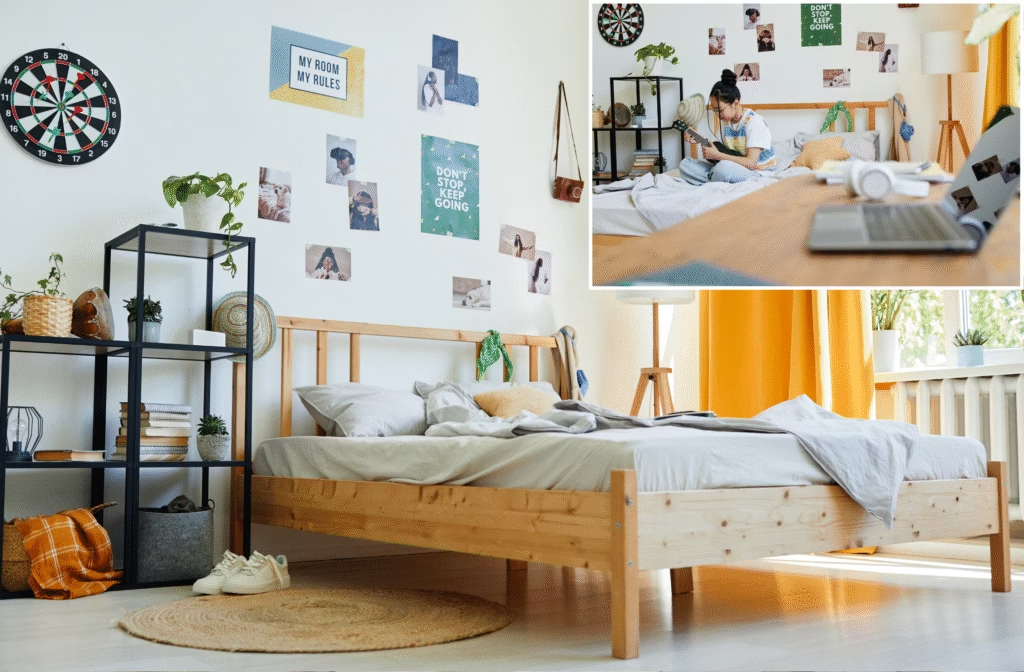
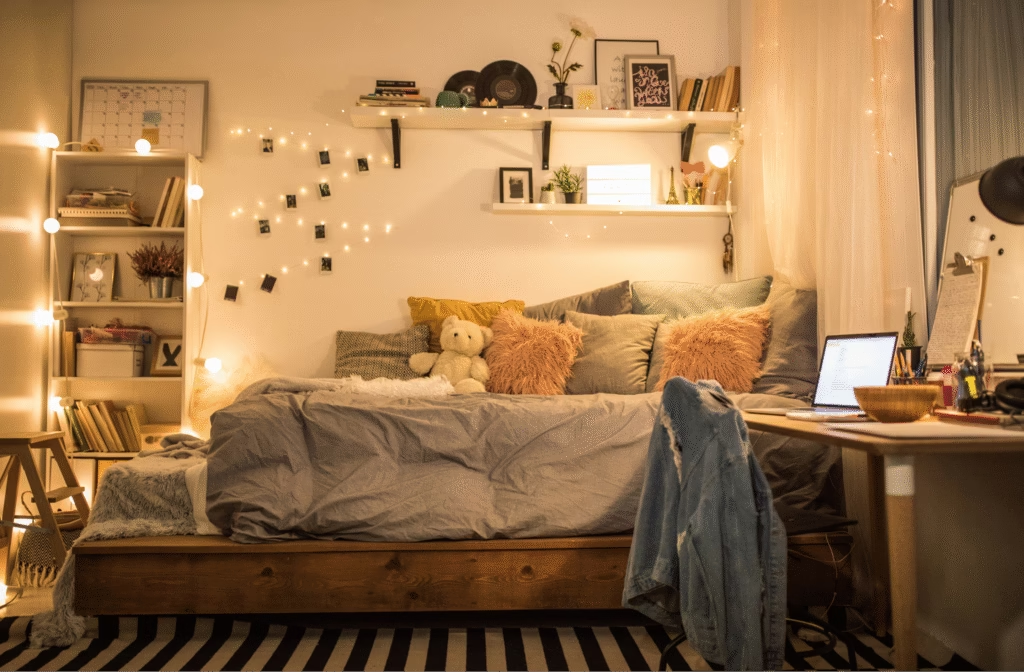
30. Use ambient lighting for evenings (string lights or LED string lights or lamps) if your child likes LED ambience. Don’t force it, as this is a very specific type of decor, not everyone is a fan of it.
31. Limit visual stimulation around study space to encourage focus.
32. If siblings are sharing one room, then give each child their own desk space, shelf, lamp, and wall decor. Assign their own zones via paint, mattress, or simply divide the space as best as you can.
33. Limit visual stimulation around the study space to encourage focus.
Ages 16 – 18: Independence, Purpose, Maturity & Privacy
Teenagers nearing the end of their teenage years prepare for life beyond school. They’re now focused on their life as adults. They’ll be more into self-grooming, studying, and becoming familiar with their likes and dislikes, but they’ll be more rebellious because of their fear of the future. Thus, their space needs to make them feel calm and in control. Their room has to become their sanctuary.
So let them personalize, and you focus on functionality.
Design Tips and Ideas:
34. Desk area holds more importance now, so it would be wise to make this area of the room more comfortable, functional, have extra storage, and organizers.
35. Keep the existing furniture if you want, but you can upgrade the finishes (brass handles, sleek shelves, neutral fabrics, and upholstery).
36. Keep the blackout curtains, and if not installed, then install blackout curtains for exam prep, sleep, and hygiene.
37. Think about adding a grooming station like a dressing table, a full-size mirror, or revamp the closets with a grooming station built inside them.
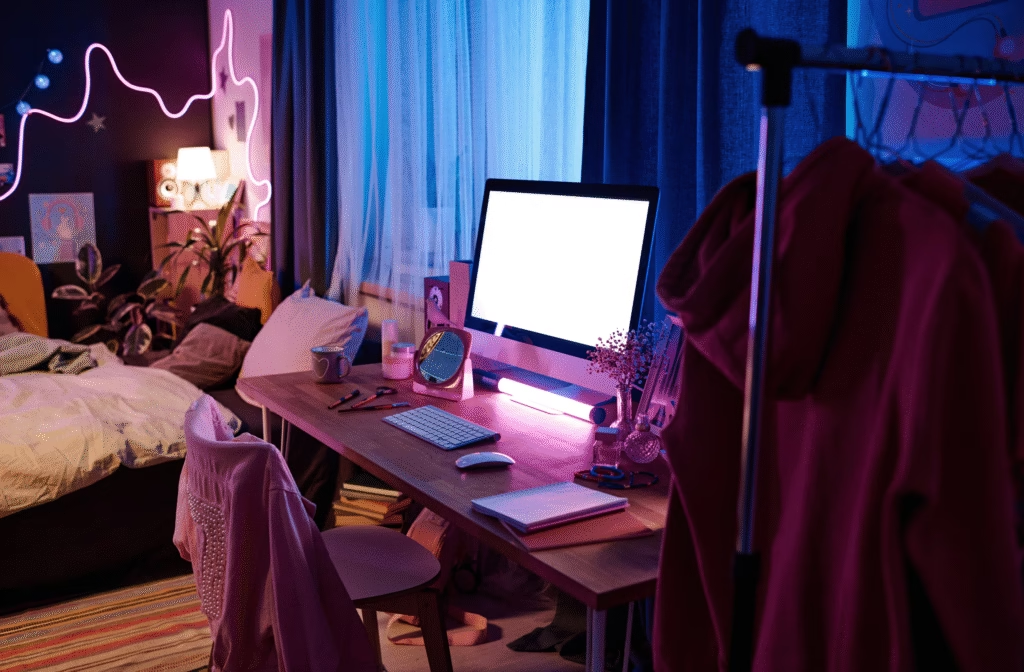
Conclusion
Designing or decorating a child’s room from toddler to teen isn’t just about matching colors or aesthetic trends or cartoonish/superhero murals and fabrics. It’s about understanding how your child grows, learns, and lives. With flexible foundations, smart storage, and age-aware zones, you can create a room that supports their development at every stage. Most importantly, it becomes a space they’re proud of and one that reflects who they are and adapts to who they’re becoming.
Reference
- The Montessori method regarding design principles for early childhood independence.
- Journal of Environmental Psychology
- “30 Small Apartment Storage Ideas to Maximize Space” by Thespruce.com
- “Erik Erikson’s Stages of Psychosocial Development” at Simplypsychology.org
- Child organization system at Napo.net
- Kids’ room design ideas, insights, and trends from professional designers at Houzz.in
FAQ
What is the best way to design a kids’ room that grows with them?
Start what a neutral base for walls and larger furniture as soon as they cross 5-6 years, and use removable decor, adaptable storage, and multi-use zones that can evolve with your child’s age.
How can I design a shared kids’ room for different ages?
Create zones within the same space, like separate areas with rugs, curtains, or shelves. Make sure each child has personal storage. Use vertical storage and bunk beds or lofts to free up floor space.
What are some budget-friendly kids’ room design ideas?
Major updates usually happen around the ages 6 to 7, ages 10-12, and age 13+
Is it okay to let kids choose room decor?
Yes, but guide them with limits. Let them pick wall art, bed linen, or small accents while keeping the larger pieces and color base timeless for longevity.

